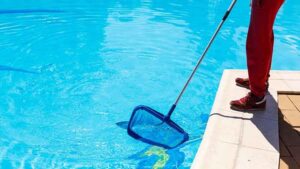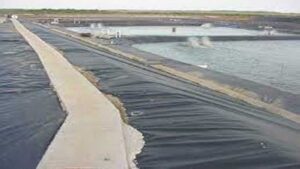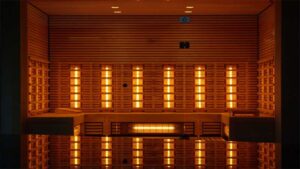How to clean a piano. Become an expert?
6 min read
We teach you how to clean a piano step by step, what products you should use, the order in which you have to clean each part of the instrument and some extra tricks so that it doesn’t get too dirty. And if your piano has taken on too much dust and you don’t know where to start, this is your guide.
Having a piano at home is a privilege, but with great power comes great responsibility, and care must be taken to keep the piano clean and undamaged . If we dust the piano on a regular basis, it should not require a professional cleaning of the interior for at least 5-10 years. So if we just clean its cover and keys regularly, and with the right products, we will be giving it more than enough maintenance. Know more about picnic blanket.
Materials to clean a piano
Pianos are usually made with delicate materials and finishes, so we cannot use any cloth or product to clean them. If you want to clean your piano correctly, take note of all the things you will need.
- Duster
- Several white microfiber cloths
- Clean Water (Ivory Keys)
- Alcohol-based cleaner (plastic keys)
- Piano polish (optional)
- Handheld vacuum or compressed air canister (optional)
How to clean a piano step by step
To clean a piano, what we will have to do is remove the dust from each of its parts with delicacy and care . And it is that from the cover, to the keys and the legs, the pianos can accumulate a lot of dust that can filter into its internal structure. That is why regular cleaning and maintenance will save us in the long run from having to call professionals to do a deep cleaning of these. You might be interested in the outdoor playhouse with slide.
1. Dust the keys
Take the feather duster and slowly use it to dust off the delicate piano keys. Because believe it or not, this dust can scratch not only the keys, but the entire surface of it, so it is very important that you know how to clean a piano correctly.
Without fear but with delicacy, dedicate yourself to passing the duster through all the corners of the keyboard and between the keys. Ideally, if you usually leave the keyboard with the cover uncovered, do this cleaning every two days. This will prevent dust from entering the piano’s soundboard.
2. Clean the keys
The next thing you will have to do is take two clean white microfiber cloths and moisten one of them with clean water, then wring it out to remove as much water as possible. Then clean the ivory keys one by one rubbing gently from back to front and with the other cloth (the one that is not wet) dry the pieces right after.
If, on the other hand, your piano has plastic keys , you can use an alcohol-based cleaning product that is not abrasive to clean them. This is because these plastic keys are not porous and their resistance is higher. For the rest, you should clean them in the same way, alternating the damp cloth with the dry one. Learn more about the best board games for adults.
3. Clean the soundboard
The third step will be to clean the surface finish of the piano and for this we will continue using both cloths (wet and dry) to gently rub the exterior of the instrument . Clean in straight strokes in the direction of the wood grain and avoid circling (which will leave swirl marks and scratches on the piano).
Be sure to use microfiber cloths moistened with water, as well as to leave the piano completely dry, since otherwise we could leave moisture marks and damage on its surface.
4. Polish the piano surface
It is not necessary to polish the surface of the piano every time we clean it, but if this is your first time in a long time and you do not know how to clean a piano thoroughly, this information will not hurt you.
To polish a piano you will have to use a small amount of piano polish (no other will do) directly on a white microfiber cloth and rub gently. Remember to always do it in the direction of the grain and be especially careful when you go over corners and edges. Remove excess product with a clean, dry cloth to finish.
5. Blow the dust off the soundboard.
Finally, if it’s been a long, long time since you cleaned your piano, it’s possible that some of the dust has accumulated on the soundboard of the instrument. Our advice is that if you want to clean the inside of a piano, and you have no experience, call a qualified professional . Otherwise you could very easily damage the strings and dampers.
Now that you know how delicate the inside of this instrument is, we are going to tell you how to clean a piano from the inside, whether it is a grand or an upright piano. To remove the dust you have to hold the vacuum cleaner or the compressed air nozzle a few centimeters from the surface of the soundboard being careful not to touch the internal mechanism. When you’re done, carefully vacuum the dust and dirt from one of the corners of the piano.
Mistakes when cleaning a piano
If you don’t know how to clean a piano, there are many things that can go wrong, so to remedy this, we have compiled some of the most common mistakes that you should avoid at all costs.
- Use paper or non-microfiber cloths: these types of materials can very easily scratch the delicate surfaces of the piano.
- Using a non-white cloth to clean the keys: This is a mistake, as dyes from the cloth can end up on the white piano keys.
- Apply a high gloss polish on piano lacquer finish: these types of polishes are not suitable for this type of finish, use a satin finish polish instead.
- Clean with regular furniture polish: Silicone-based or lemon-based products, among many others, can damage the exterior and interior of the piano.
- Putting pots, vases, paintings, drinks or objects of any kind on top of the piano: these types of objects can not only damage the surface of the piano, but can also affect its sound.
How to keep the piano clean
Now that you know how to clean a piano and how to prevent it from getting damaged, we are going to give you some tips to keep it clean on a daily basis.
- Clean your hands well before playing: Dirty hands and fingers when playing the piano is one of the main reasons most pianos get dirty.
- Protect your piano from the elements: External agents such as sun, humidity, heat and cold can cause your piano to age, fade or even become damaged over time. So try to keep your piano out of direct sunlight and try to place it in a room with controlled temperature and humidity.
- Close the lid when you are not using it: make it a habit to close the lid of your piano when you have stopped playing, this will help protect it from dust, sun and humidity.
And so far our guide on how to clean a piano step by step, plus some tips on proper maintenance. We hope you’ll visit this article regularly to keep your precious instrument as clean as possible, so… see you soon!






